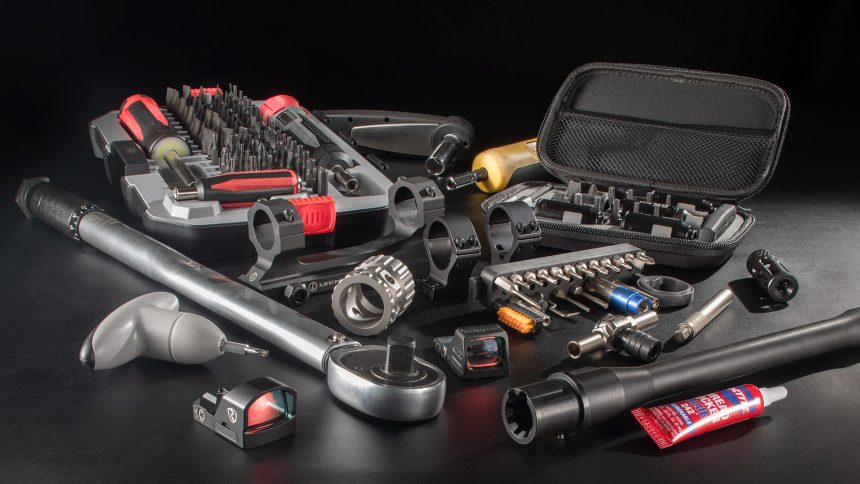Vibration, improper installation, pounding recoil and hard use conspire to rattle mounted gun accessories loose. It can be disastrous, so Shooting Illustrated consulted with some of the industry’s foremost experts.
The polymers in today’s firearms and accessories provide long-lasting service and deliver combat-proven performance. Run a Google search to discover if thread-locking compound should be used on plastic parts, however, and the AI-generated response warns against doing so—a caution largely fueled by radio-control hobbyists.
Gun owners can ignore that answer, according to Jon Canipe, director of Product Management of Firearm Accessories at Magpul. “We always recommend the use of a thread-locking compound; either the included thread-locking patch on our Magpul hardware, or something similar like blue Loctite will work if using another manufacturer’s hardware,” he said.
“I’ve found it easiest with the patched screws to run the nut all the way down and back out with a 7 mm wrench … this ‘breaks in’ the polymer patch and makes it much easier to adjust the nut depth,” Canipe said. “The critical part of the assembly is getting the nut depth right for your mounting surface. Once it’s set, it is set for that surface forever and you’re just a quarter-turn of the screw from installing and removing the accessory.”
He said 15 inch-pounds is the proper torque value for polymer-on-polymer and recommends a torque wrench because, “…‘snug’ to some people will be 5 inch-pounds and to some gorillas it will be 150 inch-pounds.”
Suppressors and Muzzle Devices
Silencer Central has detailed tips for properly installing suppressors on firearms on the company’s website—silencercentral.com. Ensuring threads are clean before starting is critical, according to Joe Kurtenbach, the company’s senior manager for Media and Relationships, who explained, “You want the suppressor to be installed snug, but be careful to not overtighten. Typically, a firm hand-tight is sufficient.”
“It’s suggested to use a locking compound for muzzle devices, but not suppressors,” he added. “Rocksett is a water-soluble option that can be removed easier. Red Loctite is a high-temp option that is more permanent.”
Then, “… if using a direct-thread-mount suppressor, the tightness should be checked after the first five rounds and then after any consecutive shots, as the heating up of the silencer can cause the threads to loosen—high rates of fire should be checked more often. If using a quick-detach, semi-periodic checks should be done just to be safe … to prevent loosening and possible baffle/end-cap strikes.”
“You really need a vice,” Dave Edelman, vice president at Mission First Tactical commented about installing non-NFA muzzle devices. “If you don’t have a great wrench, use a cloth or sponge in between your tool and firearm to protect the finish. Make sure you have a good crush washer … they can only be used once. When timing is required, pick a reference point on your upper or barrel. If [you] overshoot the timing, get a new crush washer and start over.”
Optics
It’s all for naught if point-of-impact wanders from point-of-aim. “One of the most important things when mounting optics is to make sure screws are tightened evenly and not over tightened,” according to Jon LaCorte, co-founder of Tract Optics. “If ring screws are too tight, they can compress the internal erector tube, which can affect the scope’s ability to hold zero and track properly. Always check with the scope manufacturer for proper torque values and use a quality torque wrench.”
“Another thing I always try to do is mount the rings as far apart from each other as possible, without the ring touching the flare of the eyepiece or objective,” he added. “This provides the most stability as the scope ‘flexes’ during recoil. I also never position a ring close to the turret.”
As for locking compounds, “Only on the mount’s base screws,” he advised. “I use Blue Loctite. I do not use locking compound on the rings, as it can throw off the torque value.”
Read the full article here





